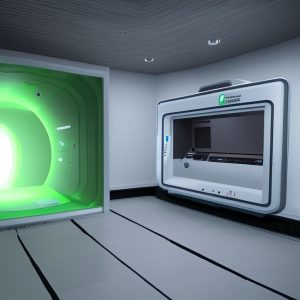Back pain is one of the most common problems in Canada and can be caused by a variety of things, including muscle strains, ligament sprains, herniated disks, and arthritis. Back pain can also be a symptom of other health conditions, such as fibromyalgia, spinal stenosis, and scoliosis.
Most cases of back pain can be treated with conservative measures such as medication, exercise, and physical therapy. Physical therapy is often recommended for people with chronic back pain or for those who have not responded to other treatments. Physiotherapy for back pain [can] help reduce stiffness and improve movement in the back and around the spine while reducing pain and muscle spasm. It can also address poor posture and incorrect body mechanics that can strain the muscles.
If you’re suffering from back pain please reach out to us to book an appointment and continue to keep reading below to understand how Kinesis Physical Therapy can help you with issues you may be seeing with your back.
What is physiotherapy and what does it involve
Physiotherapy is a profession that specializes in the rehabilitation of physical impairments, the promotion of mobility and functional ability, and the maintenance of healthy muscles. It can be used to treat people with injuries or disabilities.
It is also commonly used for preventative measures to help maintain muscle strength. Our physiotherapists are experts in numerous physical therapy techniques and can help by assessing patients’ movements before developing an individualized treatment plan that usually includes exercise therapy as well as options like manual therapy techniques such as ultrasound or electrical stimulation treatments. The goal is not only to relieve current pain but also to restore function so the patient can return home with independence!
The benefits of physiotherapy for back pain
You’re reading this post because you’re experiencing back pain and you want to know if there is a solution. If so, physiotherapy may be the answer. Don’t let your fear of an unfamiliar setting stop you from exploring the benefits that physiotherapy has to offer.
It’s advised to take physiotherapy in cases where the pain is interfering with your day-to-day life and preventing you from living your life to the fullest and enjoying the things that matter (e.g. work, sports, family, and social gatherings). This is because physiotherapy tries to improve your quality of life through managing pain, improving mobility, and restoring function.
Your back is critical to your everyday life and when it’s sore and not working properly it can cause a lot of issues with your day-to-day life. Physiotherapy can be very effective at helping to reduce pain and stiffness in muscles, joints, and bones. It can also help to improve activities of daily living, mobility, range of motion, and strength – all of which are important for having a good quality of life and reliable back.
If you have back pain due to an injury or if you have had a condition such as arthritis, it’s advised to visit your doctor first. There are several medical treatments that can help with back pain problems (e.g. medications), but sometimes these aren’t enough.
What physiotherapy can do for back pain
If you have lower back pain or neck pain due to an injury, physiotherapy can help restore movement and strength in the affected areas.
If you have had a condition such as arthritis for a while, physiotherapy may be useful in restoring range of motion and increasing mobility in order to prevent further damage. In fact, research shows that people with lower back pain who take part in a rehabilitation program are less likely to experience a relapse of their pain and less likely to consult with their doctor for this reason.
Physiotherapy can be particularly helpful if you decide to keep on playing sports but are suffering from injuries or have overuse problems.
What to expect from your first physiotherapy session
Anytime you visit a physical therapy office it might feel a little overwhelming and intimidating. At Kinesis Physical Therapy we aim to make you feel as comfortable as possible with an inviting staff and welcoming location. While you might feel like the only one in the room who doesn’t know what they are doing don’t let your fear keep you from getting help for your back pain! Here are some tips to make sure that your first visit is successful.
- Arrive Early – It’s important to arrive at least 15 minutes before your scheduled appointment time so that you have plenty of time to fill out paperwork and get acquainted with the environment. Make sure to bring any medical records or doctor notes with you so that all pertinent information can be recorded during this initial meeting.
- Be Friendly – Don’t be shy about asking questions or talking about your back pain. The therapists want to help you and the best way for them to do that is if they understand what is causing your problem.
- Be Prepared – In order to get the most out of your first visit, it’s important that you are as prepared as possible. You should be well-rested and have eaten beforehand so you don’t feel lightheaded during your physical exam. Since the therapist will be evaluating how much pressure and pain you experience when they touch different parts of your body, it’s also a good idea to wear comfortable clothes that will allow them to perform their tests and measurements in an unhindered manner.
- Be Enthusiastic – It’s important that you are excited about the idea of physical therapy because this will allow your therapist to see how motivated you are. If they know that you want to feel better, they can help provide creative exercises and stretches that will give you the best results in the shortest amount of time.
- Be Patient – It will take time to heal your back pain problem, so you need to make sure that you are giving your body the time it needs. Don’t be discouraged if you don’t feel better right away; it may take up to six weeks of daily exercise before you start feeling like yourself again.
Some common physiotherapy treatments for back pain
If you’re one of the many people who suffer from back pain, you know how debilitating it can be. Not only does it make it hard to get through the day, but it can also lead to long-term health problems.
Fortunately, there are a number of treatments for back pain that can help you manage your symptoms and get your life back on track. Physical therapy is one such treatment and a great way to start working your way towards feeling better.
Here are some common physiotherapy treatments for back pain:
Manual Therapy: This is where a physiotherapist manipulates the spine using their hands in order to move it into its proper alignment. It relieves pain and restores movement.
Therapeutic Exercise: Stretching, strengthening, and stabilization exercises are an important part of the rehabilitation process. These movements will improve your motion while relieving symptoms in order to help you get back on track faster!
Thermal & Electrical Modalities: Hot and cold packs, ultrasound, or IFC treatments can be used to stimulate tissue by increasing blood flow. This will decrease swelling in the area which also relieves pain! These procedures are great for decreasing mobility issues caused by chronic injury as well.
To get started you’ll need to book with a physiotherapist who will work with you to create a customized plan that’s designed to help strengthen and stretch your back and surrounding muscles, relieving pressure and pain as time goes on.
How to continue with your physiotherapy treatment at home
We get it, back pain isn’t fun and is something that many people have to deal with. Whether it’s because of sitting at a desk for too long, doing physical labor, or any other activity that puts strain on the back muscles and spine, most people will experience some level of back pain in their lives.
If you find yourself in continuing discomfort or unable to move freely and without pain we advise reaching out to a doctor or contacting us immediately before doing any at-home exercises for precautionary reasons.
On the other hand, if you’re not limited to the soreness in your back then the first step is identifying what type of back pain you’re dealing with. Is it an acute injury? If so, rest might be all you need!
There are several different types of physiotherapy treatment options available to you at Kinesis Physical Therapy so whichever option is best for your symptoms will depend on what type of back pain you’re experiencing and the severity of the pain.
As mentioned please contact us or book an appointment with us so we can help diagnose the problem.
What to do moving forward with back pain
The first step in the road to recovery is seeking professional advice from a physiotherapist or doctor to help diagnose truly what the problem with your back might be. If your back is temporarily sore with a few aches some at-home stretching, foam rolling, or rest may be all it needs.
As the back is arguably an important part of the human body we urge anyone who continues to experience regular back pain to reach out to our Physical Therapy office to book an assessment. Our physiotherapists are some of the best in Grande Prairie, AB, and are fully capable of fixing and completing a detailed plan to help you work towards improving your day-to-day life.



